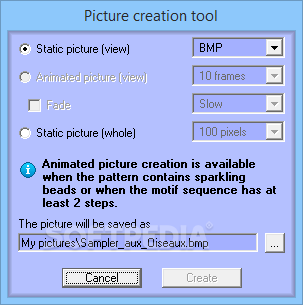

- #FREE PASCAL FILE TIME RESOLUTION HOW TO#
- #FREE PASCAL FILE TIME RESOLUTION CODE#
- #FREE PASCAL FILE TIME RESOLUTION PASSWORD#
- #FREE PASCAL FILE TIME RESOLUTION FREE#
- #FREE PASCAL FILE TIME RESOLUTION WINDOWS#

#FREE PASCAL FILE TIME RESOLUTION FREE#
Create // Embed the file handling in a try/except block to handle errors gracefully try // Load the contents of the textfile completely in memory slInfo. Free Pascal, formerly known as FPK Pascal, is an open-source program used to compile a variety of Pascal dialects. uses Classes, SysUtils const C_FNAME = 'textfile.txt' var slInfo : TStringList begin // Create an instance of the string list to handle the textfile slInfo := TStringList. These files can be opened and edited inside the Lazarus IDE or any other text editor.įor specific purposes you can create your own file type that can only store one type of data. pkWebSafePalette2: another set of web-safe colors.

pkWebSafePalette: a set of web-safe colors as defined by a wikipedia article. 'all' colors nicely arranged use GradientSteps to define the horizontal resolution. You can store strings in this type of file, but also numbers which can be formatted in different ways. The time flow when exactly the color is selected is determined by the property PickMode. Every line ends with an end-of-line marker ( LineEnding). This is the expected result if your monitor has a resolution of 1680×1050 px, and you render a red rectangle at position (0/0) width dimension 640×480 px, and a green rectangle at position (320/240) with dimension 320×240 px. This version contains minor bug fixes and allows you to make a.
#FREE PASCAL FILE TIME RESOLUTION WINDOWS#
When using files in classic (non-object oriented) Pascal, you can use a file of type TextFile (or simply Text) to store text, that is typically structured in lines. Readme Builder 1.3 is a powerful and easy-to-use application which allows you to build a readme file in C++, Turbo Pascal, or Visual Basic from a windows text. Created by Lazarus for every new project.lpr.
#FREE PASCAL FILE TIME RESOLUTION CODE#
This page explains the basics of file handling. Pascal source code file (useful if you want to avoid confusion with Delphi source code files).lfm. Desktop The desktop file with all desktop settings (open windows, history lists, breakpoints etc.) will be saved. Environment The current environment settings will be saved. Files can be used to store user settings, error logs, measurement or calculation results, and more. Auto save Here it is possible to set which files are saved when a program is run or when the IDE is exited: Editor files The contents of all open edit windows will be saved. store data in such a way that it can be retrieved at a later time, without having to recreate it.
#FREE PASCAL FILE TIME RESOLUTION HOW TO#
My initial thoughts were "It would be cool to have a program that would take an index of words from a computer, and then generate variations of every word to account for people who obfuscate characters.Something every programmer needs to know is how to work with files. It creates a video file, so you dont get the full 20MP resolution, but therefore its already. So I'm not sure how to make it work? I didn't really think it through enough before I started. But I'm not sure how to structure that level? In other words, I need to set "a level" for which the program will function, that the user can decide. Potentially, for every word, I could create thousands of additional one's! A 100Gb source file would soon become terabytes! My problem is this : given the word 'Edward', for example, how do I decide to what level I should obfuscate it? Just the first letter 'E' to be replaced with a '3', and nothing more perhaps? Or the first two letters 'E' and 'd' to be replaced with ALL the values in the LEET table for both of the letters E and d (meaning dozens of new words would be generated from 'Edward', and so on), or all the values for 'E' but nothing else.the list goes on. LblProgress.Caption := ('Parsing Index ease wait') A load of file opening stuff and then the obsfucation then an OpenDialog that opens the source text file to read. The next sequence of loops populates the string grid by counting the number of characters for each letter of the alphabet and then inserting them down, column by column and row by row. I have managed to create the program so far that it generates a LEET table full of many different values for each letter of the alphabet and stacks them in a StringGrid that I can access as part of the process (and it is also outputted visually to a table).

#FREE PASCAL FILE TIME RESOLUTION PASSWORD#
I work in the IT security field and password breaking is often part of it and that's what the program is for. For every word it finds, I want it to add "an amount" of obfuscation in line with how users these days will use '3' instead of 'E' in their passwords, or '1' instead of 'I'. I have more of a 'problem solving' question than a syntax related problem.īriefly, I'm creating a program that will read a text file full of words (that may feasibly be a list of passwords), one word per line - I'll be using ReadLn for that bit in a loop.


 0 kommentar(er)
0 kommentar(er)
